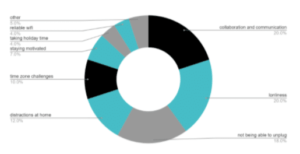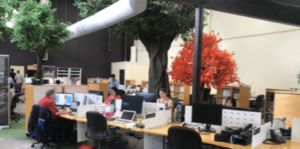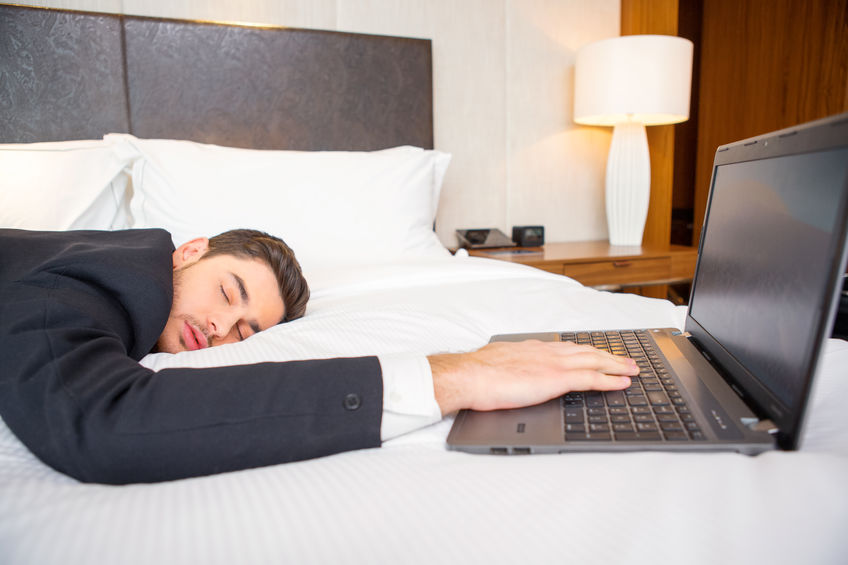Is remote working here to stay?

IN THIS STORY
Humans are remarkably adaptable. As coronavirus causes mayhem, workplaces across Australia are embracing remote working with extraordinary enthusiasm. Ordinarily, it would have taken years to explore a new way of working. Instead, it took place in a mere matter of days and weeks.
As restrictions ease, managers and employees alike are questioning: do we want to go back to how it was? Perhaps there is a better way for everyone? How can remote work become part of a typical working week? Will productivity suffer when workers aren’t physically in the office?
According to Monday.com, remote working is tipped to increase by 500% over the next two years.

What is remote working?
Remote working means that rather than commuting to the office, staff work remotely wherever they can do their best work, typically (but not always). Remote working can be a full-time arrangement for those who flourish without distraction, or a flexible week that includes days in the office.
Through the current lockdowns, staff are finding there is no perfect work environment. The savvy ones group tasks together so they can choose which days they are quietly working at home or collaborating in a busy office. It’s about finding the best location for the work at hand.
Old assumptions about remote working have been blown away
The 2020 COVID-19 pandemic has tested our preconceptions about how we work. Employers have realised that remote workers can be just as productive working from home as in the office. Instead of spending 60-90 minutes travelling to and from work, staff can spend that time on productive tasks. Or with their families.
The founders and business owners that we speak to are surprised that things are working so well. The managerial mindset is changing. Managers and company owners realise they can trust their staff to work remotely. The old view that managers must be able to see people working at their desks has been smashed.

Is working remotely a good idea?
There’s plenty of benefits to remote working, but we can’t say it’s 100% good for everyone. It depends on an organisation’s culture, industry and workplace needs. However, it certainly is a growing trend (as the aforementioned 500% growth forecast proves). The good news is that companies like the Workplace Gender Equality Agency have found that 70% of Australian organisations have flexible work arrangements already in place. It also found that workplace flexibility leads to improved organisational productivity, better staff attraction and retention and improved employee wellbeing. Meanwhile, a New Zealand company found that moving to a four-day work week resulted in a 20% increase in productivity. There are very few organisational changes you can make that have this level of ROI.
The future of remote working: who can work from home?
Clearly, only certain types of work can be done from home. Recently, economists and researchers have been exploring exactly how many of us qualify.
- Economists from the University of Chicago found that about 37% of jobs could be performed from home.
- A 2020 Norwegian study came up with a similar number, 36%
The Norwegian study also found that of that group, 52% of managers are able to work from home as well as 52% of academics and 43% of technical and associate professionals are able to work from home. Impressive technology and SaaS platforms make it easier for more industries to work online. Increasingly, it’s only hands-on frontline work that can’t be conducted remotely.
Working remotely pros and cons
Buffer.com’s annual State of Remote Work survey (conducted in 2020 among 3500 remote workers from around the globe) found that 98% of respondents would like to work remotely, at least some of the time for the rest of their career. Furthermore, 97% of staff would recommend remote work to others. The study also found that remote workers enjoyed the following benefits:
- ability to have a flexible schedule – 32%
- flexibility to work from anywhere – 26%
- not having to commute – 21%
- ability to spend time with family – 11%
- ability to work from home – 7%
However, the report also identified the biggest struggles for remote workers which were:
- collaboration and communication – 20%
- loneliness – 20%
- not being able to unplug – 18%
- distractions at home – 12%
- time zone challenges – 10%
- staying motivated – 7%
- taking holiday time – 3%
- reliable wifi – 3%
- other – 5%

Remote working is changing lifestyles
Remote working means that staff are able to make that sea or tree changes without handing in their notice. As property prices reach unprecedented highs (Melbourne’s median house price leapt 54% over the last decade) the appeal of low-mortgage or mortgage-free living in regional areas is powerful.
No one ever says on their deathbed, ‘I wish I’d worked more.’ So, remote working supports the opportunity for families to embrace more quality time together while still supporting the careers of parents.
Is a hybrid of remote working and office space the best solution?
Sharon Zeev, founder of PR Agency, Agent 99 always preferred working from home. She launched her agency in 2007, and spent the first three and a half years running the business from her lounge room. As the agency grew, she fell for accepted business norms and decided to set up an office in a warehouse space. While it’s usual for businesses to establish their own office as they grow, Sharon felt she’d lost something in the transition. With Covid lockdowns enforcing work-from-home practices she’s rediscovering what she lost – minimal commuting, focus, productivity and cost savings.
“There are no distractions and the cost saving is a benefit,” said Sharon. “ I have hired two staff I’ve never met. Now that restrictions are easing, I’m questioning if I want to return to the office setup.
“I’m tempted to give away the fancy warehouse office and go full remote. But would we miss the collaborative creative energy? So, I’m looking into a hybrid solution. By using a mix of remote and in-person office space there’s an option for interaction, collaboration and content creation. I’m yet to find a solution but slowly working through the options at present.”
Being 100% online has challenges too
Meanwhile Mark Webster, co-founder of marketing training company Authority Hacker, has been 100% online for seven years.
“Working from home is a marathon, not a sprint. Many businesses have rushed to move their teams remote, but their current setup may not be sustainable. This will heavily impact long-term growth. Little things like the quality of the headsets your team are using, the use of dual monitors and so on are all things that a fully remote business should be looking into.
“Not only that, but employee wellbeing is a huge consideration too. The full psychological effects of working from home would not have even begun to settle in at this stage. It took me perhaps a full year to really feel the effects caused from a lack of social interaction and lack of variation in my work space.
“Anyone considering remote work in their business strategy seriously needs to look beyond what’s happening right now and be asking “what will my company look like in 1-2 years time?”. This is a long-term commitment and not a simple switch you can flick overnight.”
The LaunchPad perspective: remote working disrupts the commercial landlord model
Traditionally, a growing company would search for a new workplace through a commercial estate agent. It’s in the agent’s best interest to recommend a solution that allows for future company growth. Anticipating a growing workforce over the coming years, the company management agrees to lease a space larger than they need. While this is highly advantageous for the landlord, it locks the tenant into a monthly cost that is more than they need or intended.
Coworking, on the other hand is flexible and cost-effective by design. Tenants , typically share office facilities where teams from different organisations share common infrastructure, resources and services. Staff have the opportunity to work remotely yet a place to come together for shared planning and connection.
As remote working increases in popularity, companies no longer need to pay exorbitant rent to provide a space for workers who may be working at home. Instead, a smaller, more flexible coworking space can be leased, with the ability to have the entire team in the office when needed. This solution can better fit the company needs (avoiding paying unnecessary rent for a future workforce that may never materialise) it also shares the costs of infrastructure that may be used infrequently, such as meeting rooms, showers and reception facilities.

Coworking spaces provide a hub for a mostly remote workforce
By adopting flexible working arrangements, with occasional in-person meetings and strategy sessions, organisations can negate some of the drawbacks of remote working (primarily loneliness and lack of collaboration). Staff working from home get a hub for in-person meetings. Companies can purchase staff desks that are close to home, giving them a local space to work that is not the dining table or the couch. The distraction of family and temptation to quickly do the laundry are negated at coworking spaces, which can improve productivity. Plus, there’s that plugin to the community that negates the damaging rise of loneliness that comes with working in isolation.
So, is remote working here to stay?
Undoubtedly, yes. With about 40% of workers able to work from home and a forecast 500% growth of remote working over coming years, remote working will become much more common. While it has some drawbacks, most workers appreciate the benefits. Meanwhile, businesses benefit from the cost savings. Using a coworking space as a central hub allows for a flexible remote working model.

